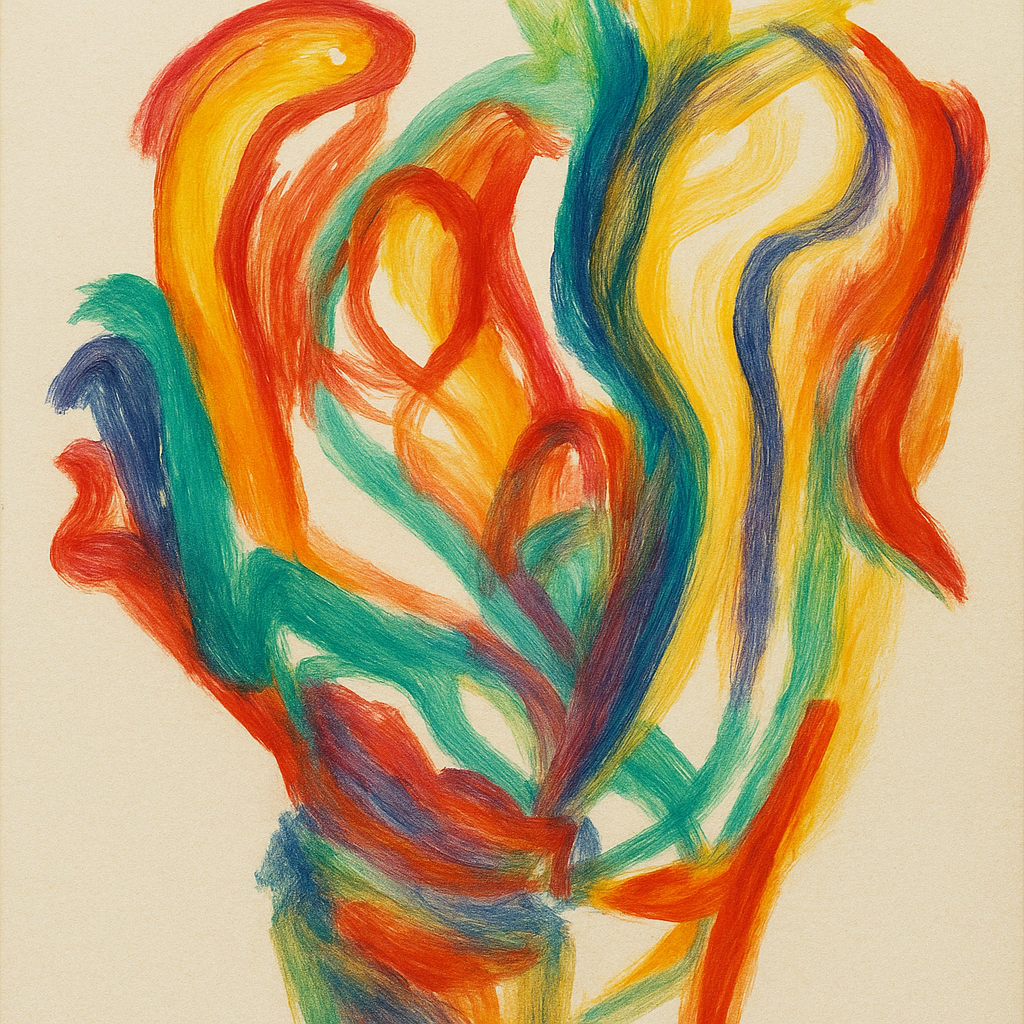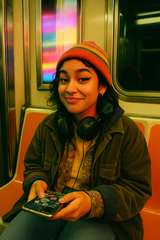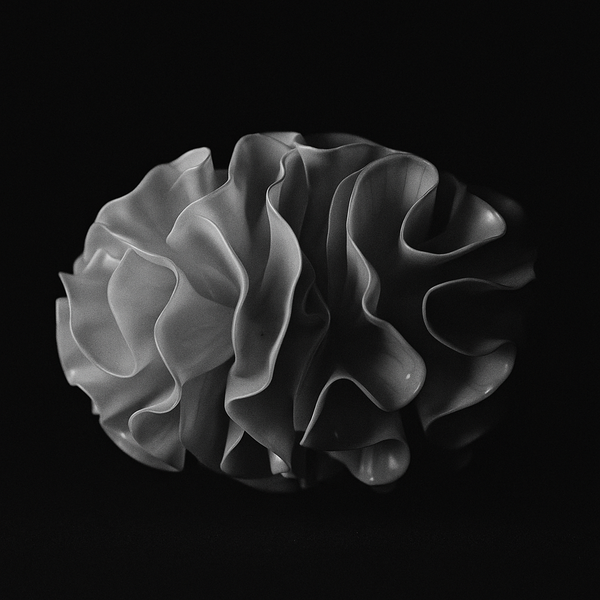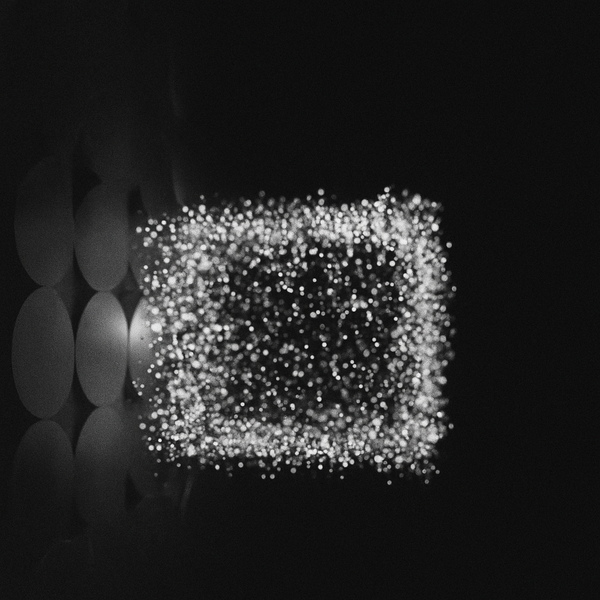When AI Paints a New Reality: The Art of Unexpected Collaborations

The first time I tried to explain color theory to my nephew, I told him that colors have feelings. "Blue is sad," I said, like some kind of amateur therapist for wavelengths. He looked at me with the kind of pity usually reserved for adults who still believe in the tooth fairy and said, "Blue is just blue." Kids these days have no respect for metaphor. But here's the thing: Pantone just released an AI that basically proves my nephew wrong. Colors do have feelings—they just needed a machine to teach us how to read them.
Pantone's new AI color palette generator isn't just another tech toy for designers to play with between coffee breaks. The Palette Generator semantically searches through Pantone's Color Insider and trend forecasting articles, essentially reading the cultural tea leaves to understand what colors mean right now, in this moment, to us collectively hallucinating beings we call society. Feed it a concept, and it generates palettes based on patterns it finds in design and trend data. It's like having a research assistant who only communicates through hex codes.
This whole situation becomes deliciously complicated when you consider how we've historically assigned ownership to visual languages. Take Georgia O'Keeffe, for instance—the woman who essentially copyrighted the aesthetic of an entire state without filing any paperwork. The artist spent decades painting those rust-red cliffs and bleached bones until her vision became so synonymous with the landscape that tourists probably feel disappointed when they visit and don't see floating cow skulls in the sky. But the terminology around this has become controversial. In 2020, the Georgia O'Keeffe Museum hosted a panel titled "This Is Not O'Keeffe Country," with Museum Director Cody Hartley stating: "Georgia O'Keeffe did not own this area. She did not discover it. It is not a phrase we like or use any longer at the Georgia O'Keeffe Museum." Indigenous writer Alanna Offield, a Puebloan poet from northern New Mexico, has written critically about this language of possession, noting that her Tewa people have lived in and cared for this ancestral homeland since long before O'Keeffe visited. As Offield puts it in her essay: "Some people still refer to Pedernal as 'O'Keeffe's Mountain' and the land surrounding her Abiquiú home as 'O'Keeffe Country'. I don't. But some people do."
O'Keeffe's relationship with New Mexico reveals something uncomfortable about how art colonizes reality. She arrived in the Southwest, fell in love with the light (artists always fall in love with the light—it's practically a requirement), and proceeded to paint the desert with such authority that her palette became the default setting for how we imagine the American Southwest. Those terra cotta oranges, sage greens, and bone whites didn't invent themselves, but O'Keeffe arranged them in such a specific way that they became a visual trademark. The indigenous peoples who'd been living there for centuries probably had their own color stories, but O'Keeffe's version got the gallery shows and the coffee table books.
Which brings us back to our silicon friend, the Pantone AI. What happens when we feed O'Keeffe's New Mexico into this digital palette generator? Does it recognize her color signatures as inherent to the landscape, or does it see them as one artist's interpretation that happened to go viral before viral was a thing? The AI doesn't care about artistic ownership—it just processes patterns and relationships, finding connections between concepts and colors without the baggage of human ego or historical precedent.
This is where things get philosophically spicy. If an AI reinterprets O'Keeffe's palette—maybe suggesting electric purples where she saw dusty roses, or neon greens where she painted muted sage—who owns that new vision? The machine? The programmer? The company that owns the algorithm? Or does it belong to all of us, like some kind of creative commons for the chromatically adventurous?
The traditional art world would probably have a collective aneurysm at the suggestion that a machine could meaningfully contribute to artistic discourse. But here's the joke they're missing: AI doesn't replace human creativity—it reveals how arbitrary our creative choices have always been. O'Keeffe didn't discover the "true" colors of New Mexico any more than Monet discovered the "true" colors of water lilies. They just made choices that resonated with enough people to become canonical.
What the Pantone AI offers isn't authenticity—it's possibility. It can generate palettes based on contemporary concepts that O'Keeffe never considered. These aren't better or worse than O'Keeffe's desert meditations; they're just different entry points into the endless game of meaning-making we call art.
The real disruption here isn't technological—it's psychological. We've spent centuries believing that artistic vision is some kind of sacred individual property, that O'Keeffe owned her particular way of seeing New Mexico the same way she owned her paintbrushes. But AI tools like Pantone's generator suggest that maybe vision is more like language—a shared system that we all contribute to and borrow from, remixing and reinterpreting based on our current needs and contexts.
This doesn't diminish O'Keeffe's achievement. She still had to stand in that desert heat, squinting at cliffs and mixing pigments until she found the exact shade that made her brain sing. The AI can suggest palettes all day long, but someone still has to decide which one captures the feeling they're after. The machine provides options; humans provide meaning.
The comedy—and there's always comedy when humans and machines try to collaborate—is watching us scramble to maintain our sense of specialness. We want to believe there's something irreducibly human about choosing burnt sienna over raw umber, that our color choices reveal deep truths about our souls. But maybe the truth is simpler and funnier: we're all just pattern-matching machines ourselves, albeit biological ones with anxiety disorders and student loans.
As AI tools become more sophisticated at reading and generating these visual languages, we might discover that originality was always more about recombination than pure invention. O'Keeffe combined desert light with modernist simplification with her own peculiar obsessions. The Pantone AI combines trend data with semantic analysis with whatever mysterious preferences its training data encoded. Both processes involve selection, arrangement, and a bit of inexplicable magic that makes certain combinations feel right.
The future of art might not be human versus machine but human with machine, each contributing what they do best. Humans bring intention, emotion, and the ability to be surprised by beauty. Machines bring pattern recognition, infinite variation, and the ability to work without coffee breaks. Together, they might create palettes O'Keeffe never imagined—electric desert sunsets, digital sage, quantum turquoise.
My nephew, in his wisdom, was both right and wrong about blue. Yes, blue is just blue—a wavelength between 450 and 495 nanometers. But it's also sadness, sky, ocean, jazz, Monday, baby boys, and whatever else we decide it means this week. The Pantone AI understands this duality in a way that's both profound and profoundly silly. It knows that colors are just data points, but it also knows that humans are meaning-making machines who can't help but feel things when they see certain combinations of light.
Maybe that's the real collaboration here: not between human and machine, but between our rational understanding that colors are just physics and our irrational insistence that they mean something more. O'Keeffe knew this. The AI knows this. And now, whether we like it or not, we all get to paint new realities together, one algorithmically-suggested palette at a time.
References
- https://news.microsoft.com/source/2025/11/05/pantone-and-microsoft-unite-to-enhance-creative-exploration-through-ai
- https://www.prnewswire.com/news-releases/pantone-and-microsoft-unite-to-enhance-creative-exploration-through-ai-302605128.html
- https://tech.yahoo.com/ai/deals/articles/pantones-ai-just-made-easier-140000930.html
- https://www.fashiontrendsetter.com/v2/2025/11/06/pantone-and-microsoft-unite-to-enhance-creative-exploration-through-ai
- https://en.wikipedia.org/wiki/Pantone
- https://www.fashiontrendsetter.com/v2/2023/02/17/pantone-adds-229-colors-to-the-pantone-matching-system
- https://www.aeon.co/essays/some-people-refer-to-new-mexico-as-okeeffe-country-i-dont
- https://www.fastcompany.com/91435187/pantone-color-generator-ai-tool?partner=rss&utm_source=rss&utm_medium=feed&utm_campaign=rss+fastcompany&utm_content=rss
Models used: gpt-4.1, claude-opus-4-1-20250805, claude-sonnet-4-20250514, gpt-image-1




